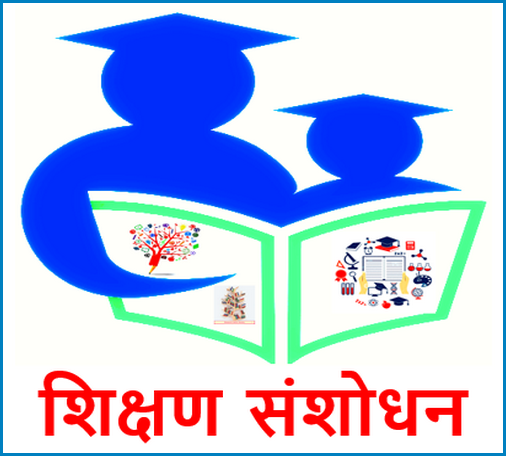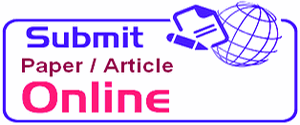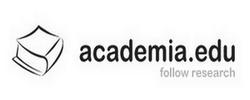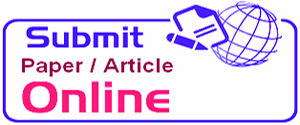Paper/ Article/ Monograph Manuscript Submission: The manuscripts in all the subject areas are welcome. Moreover, submitted manuscript must original and not be previously accepted or published elsewhere.
Easy Steps to Submit: –
- First Download Journal – Submission Template – prepare your full paper/article in it with proper setup. (As per Author Guidelines > Manuscript File Format )
- Download Undertaking Form
- Submit Online. – (upload Paper File & Undertaking Form)
Submit the paper/article electronically as attachment: SUBMIT ONLINE or on E-mail ID of the Managing Editor as per all instructions following as under.
Manuscript Submission File Format ( EASY FOR SETUP ) :
Language: Hindi, Gujarati, Marathi, Punjabi, English and other languages.
File Type: Authors should submit the articles only in MS-word by following guidelines.
Page Format: A4 pages, Single column – single spaced type, line spacing – 1.0 , Narrow margin.
Font Type : Authors must follow these Fonts only.
| Languages of Publication | Use any 1 Font (Commonly UNICODE ) |
| Hindi, Sanskrit, Marathi, Konkani Nepali, Kashmiri, Maithili, and Sindhi | Arial Unicode / Mangal / Nirmala UI / |
| Gujarati | Unicode / Mangal / Shruti / Aakar / Nirmala UI |
| English | Times New Roman |
| Kannada, Telugu, Tamil | Arial Unicode / Nirmala UI / Nudi 05 / Latha |
| Assamese, Bengali, Manipuri | Arial Unicode / Nirmala UI |
| Malayalam, Malay, Bangla | Arial Unicode / Kartika / Kalinga / Nirmala UI |
| Odia, Oriya | Arial Unicode / Kartika / Nirmala UI / Kalinga |
| Punjabi, Gurmukhi | Arial Unicode / Nirmala UI / Raavi |
| Urdu | Tahoma / Nafees Naskh / Alvi Nastaleeq / Jameel Noori Nastaleeq |
| Arabic, Persian | Arial Unicode / Nirmala UI / Mothanna / Droid Arabic Naskh / Shilia / Silsilah / Arabetics Aladdin |
| Filipino, Pilipino, Indonesian. |
Arial Unicode / Sans Serif / Bahasa Indonesia |
| Bangla, Bengali | Arial Unicode / Kalpurush / Shonar / Akaash |
| For Other Languages | Any 1 standard Font – Author can send us Font Name or File (TTF) with Article / Paper as Email attachment. |
Theory – Contents fonts size : TITLE – 20 points and Bold, subtitles – 11 points and Bold, Contents – 11 points, theory text – 11 points.
Template File Setup : Follow Journal Template, Justify all Paragraphs, Proper lines spacing and indent, Use Numbering for Main Headings, Use bullet marks for sub-headings, Use Numbering for Tables, Charts, Figures/Images, Reference Numbering.
Figures/ Tables/Charts: (with numbering eg. 1, 1.1, 2, 2.1) at proper place and in center of page.
Size of Submission: Paper / Article file should be approx. 2 to 10 pages / 1000 to 5000 words / 5 MB as per mentioned publication charge on website. ( For above limit file publication charge will be extra), In any case the size of the file should never exceed 30 pages/15000 words/15 MB owing to file restriction implied..
Evaluation of Paper / Article: The following criteria are observed and points are calculated (out of total 10) for each criteria.
- Relevance of Topic / Importance of Topic
- Scholarly Quality of Contents, Theory, Information
- Use of Theory, Literature Review, Methodology
- Novelty and Originality
- Technical Content and Correctness
- Critical Qualities – Method, Analysis, Discussion, Result, Reviews
- Appropriate Titling of Section Headings – Content sanctioning
- Clarity of Conclusion / Summary / Result
- Usage of English Grammar / Language / Chart / Table / Figures etc.
- Appropriate use of – References/ Bibliography, Websites/Webpage etc.
Structure of Research Paper/Article Example : (author may add subtitles in middle part of research paper /article as per topic /study matter)
- Title of the Paper / Article
- Author’s Name, Email, Contact Number, Designation, University/College, State, Country.
- Abstract
- Keywords or Phrases (4 to 10)
- Introduction
- Literature Review
- Materials and Methods
- Analysis – Discussion
- Findings / Result
- Recommendations
- Conclusion / Summary
- Acknowledgment (Fund, Grant, Guide, Supervisor etc.)
- References or Bibliography (Minimum 4-5)
- Author’s Biography (Maximum 100 words)
Submission Order: (subtitles with descriptions for example only)
(All sub titles/points can be as per different subject and topic of research so; Author may use contents, wording matter, charts, etc. as per topic or subject )
Abstract: This section should detail the problems, experimental approach, major findings and conclusion in one paragraph and should appear on the second page. The abstract should be 100 to 250 words in length. Complete sentences, active verbs and the third person should be used. The abstract should be written in past tense. Standard nomenclature should be used and abbreviations should be avoided. Avoid abbreviation, diagram and references in the abstract.
Keywords: Author(s) must give 4 to 10 key words which can identify the most important subjects covered by the paper. They must be placed at the end of the abstract. A list of non-standard abbreviations should be added. In general, non-standard abbreviations should be used only when the full term is very long and used often. Each abbreviation should be spell out and introduced in parentheses the first time it is used in the text. Only recommended SI units should be used.
Introduction: The introduction should set the tone of the paper by providing a clear statement of the study, the relevant literature on the study subject and the proposed approach or solution. The introduction should be general enough to attract a reader’s attention from a broad range of scientific disciplines, abbreviations should be included. The manuscript should include the purpose of the investigation and relating the manuscript to similar previous research. Only information essential to the arguments should be presented.
Literature Review: This section should contain paper / article related other past research works with respective author names and other details.
Methodology: This section should provide a complete overview of the design of the study. Detailed descriptions of materials or participants, comparisons, interventions and types of analysis should be mentioned. However, only new procedures should be described in detail; previously published procedures should be cited and important modifications of published procedures should be mentioned briefly. Capitalize trade names and include the manufacturer’s name and address. This section must contain specific details about the materials studied, instruments used, specialized source and related experimental details which allows other research worker to reproduce the results. Obtain permission for all fully borrowed, adapted, and modified tables and provide a credit line in the footnote. Results and Discussions The results should be concisely presented. Results and discussion may be separate or combined based on the author’s requirement. Tables and figures should be designed to maximize the comprehension of the experimental data. The interpreted results should be explained clearly in discussions and should relate them to the existing knowledge in the field as clearly as possible. Tables, Graphs and figures (Illustrations) should be inserted in to the main text at respective place they should appear when published and should have appropriate numbers and titles with an explanatory heading. Labels of the table, graph and figures MUST be in the text form and should not form part of the image. Colour photographs and illustrations (line drawings, halftones, photos, photo micro-graphs etc.) must be clean originals or digital files would be charged that may be intimated along with the acceptance letter. Those photographs must be clear and sharp. Digital files are recommended for highest quality reproduction.
The Discussion should interpret the findings in view of the results obtained in this and in past studies on this topic. State the conclusions in a few sentences at the end of the paper. The Results and Discussion sections can include subheadings, and when appropriate, both sections can be combined.
Results should be presented with clarity and precision. The results should be written in the past tense when describing findings in the author(s)’s experiment. Previously published findings should be written in the present tense. Results should be explained, but largely without referring to the literature. Discussion, speculation and detailed interpretation of data should not be included in the results but should be put into the discussion section.
Acknowledgement (if any): This section can be kept at the end of the manuscript before reference section. This section can be used to acknowledge the help of those who do not qualify for authorship or to acknowledge funding, donated resources or significant contribution to the research.
References/Citations: (APA/MLA/Chicago – Style as per study field) References to the literature cited for the manuscript should be numbered in order of appearance in the manuscript and cited in the text with superscript numbers.
Study field – style :
Citation – References style : – https://www.scribbr.com/citing-sources/citation-styles/
Journal papers: (Examples)
- Anil S. (1999): Ethics in Tenali Rama’s comic stories, Shikshan Sanshodhan: Journal of Arts, Humanities and Social Sciences, Vol-1, Issue-1, pp. 21-25.
- Shah R., and Ramesh G.R, (2008): “Article title”, Journal of Social Sciences,Vol-2, Issue-5, pp. 12-15.
Books :
- S.Gupta.(2006): Introduction to human Research, 3rd. Ed. RCS Publication, pp. 34-96. .
Book chapter: Botkin, J,(2006): What do you meant by Socialist? : Social Science of Living Planet, 3rd edition, Pp. 14-48, RCS Publication, Gujarat.
Conferences/proceeding paper :
- Tushar P, (2001): “Geospatial technology for disaster management”, International Conference on Disaster Mitigation and Management, PSNA College of Engineering and Technology, Dindigul, pp 234-238, .
Web References :
- Roshan J., (2015): How to review research article of social sciences. RCS Publishing; Web-
http://company.org/articles/news/11/6/16/2. Accessed 26 June 2010. - https://pitt.libguides.com/citationhelp
- https://www.scribbr.com/citing-sources/citation-styles/
Tables should be kept to a minimum and be designed to be as simple as possible. Tables are to be typed double-spaced throughout, including headings and footnotes. Each table should be on a separate page, numbered consecutively in Arabic numerals and supplied with a heading and a legend. Tables should be self-explanatory without reference to the text. The details of the methods used in the experiments should preferably be described in the legend instead of in the text. The same data should not be presented in both table and graph forms or repeated in the text.
Figure legends should be typed in numerical order on a separate sheet. Graphics should be prepared using applications capable of generating high resolution GIF, TIFF, JPEG or PowerPoint before pasting in the Microsoft Word manuscript file. Tables should be prepared in Microsoft Word. Use Arabic numerals to designate figures and upper case letters for their parts (Figure 1). Begin each legend with a title and include sufficient description so that the figure is understandable without reading the text of the manuscript. Information given in legends should not be repeated in the text.
Equations:
All equations should be numbered in order from starting and the notations used in the various equations should be given after abstract. Authors are insisted to follow standard notations and SI units system even though it’s not mandatory.
Images:
Images should be supplied without being inserted in tables, borders or any other format, they can be copy pasted in the required space. It will be better if the images are given in the last page, the quality of the image and the size should be proper.
Citing References in the Text: References must be cited in the text in superscript digits at end of sentence or paragraph before punctuation or full stop1. In case of two or more references, separate the superscript digits by comma1,2,6. Moreover, If there are more references but in continuous numbers then use dash between superscript digits2-6. Citation may be direct or indirect.
Plagiarism Check: Authors can ensure the manuscript in Good quality plagiarism software/ tools to check similarity that would not be more than 20% including reference section. In the case of exclusion of references, it should be less than 10%. Minimum 80% originality is require for a scientific paper/article.
Final version of paper/article with corrections and submission: On the acceptance of paper/article manuscript, final version of paper/article must be prepared into our submission template with proper setup as per above guidelines, author can ensure its originality, spelling corrections, references – citations etc.
Submission Email: shikshansanshodhan@gmail.com or Submit online
The Managing Editor:
Shikshan Sanshodhan : Journal of Arts, Humanities and Social Sciences
![SHIKSHAN SANSHODHAN [ ISSN(O): 2581-6241 ] Peer-Reviewed, Referred, Indexed Research Journal.](https://shikshansanshodhan.researchculturesociety.org/wp-content/uploads/SS-TITLE-HEADER.png)










